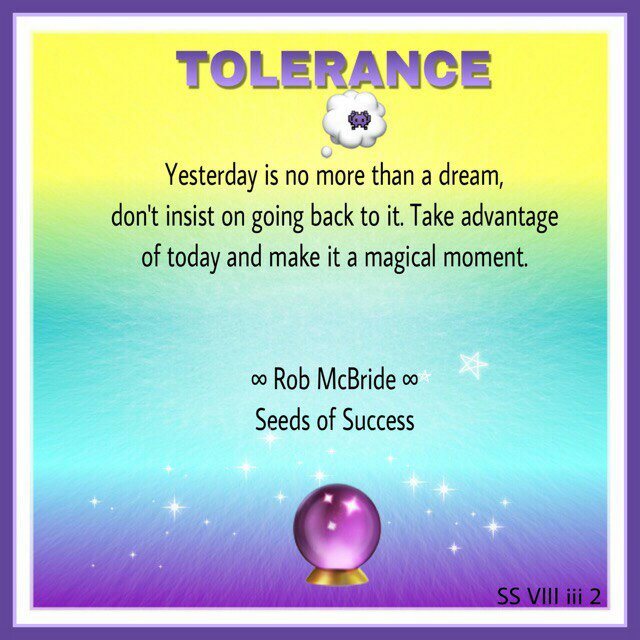Adversity can build us or break us. Face difficulty with dignity and learn from the experience.
∞ Rob McBride ∞
SS VIII iii 9
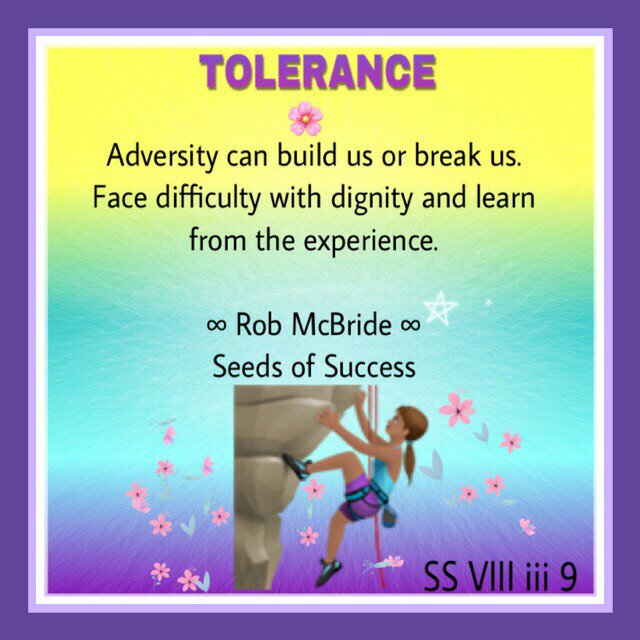
Adversity can build us or break us. Face difficulty with dignity and learn from the experience.
∞ Rob McBride ∞
SS VIII iii 9

Be one of those who gives rather than takes. As a consequence you will later have to learn to receive as well.
∞ Rob McBride ∞
SS VIII iii 8
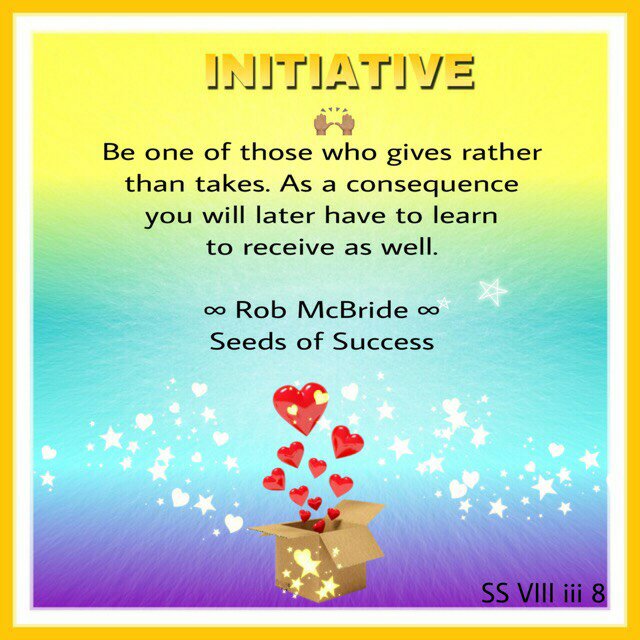
Free yourself from the chains producing misery. Instead invest your time in what brings you liberty.
∞ Rob McBride ∞
SS VIII iii 7
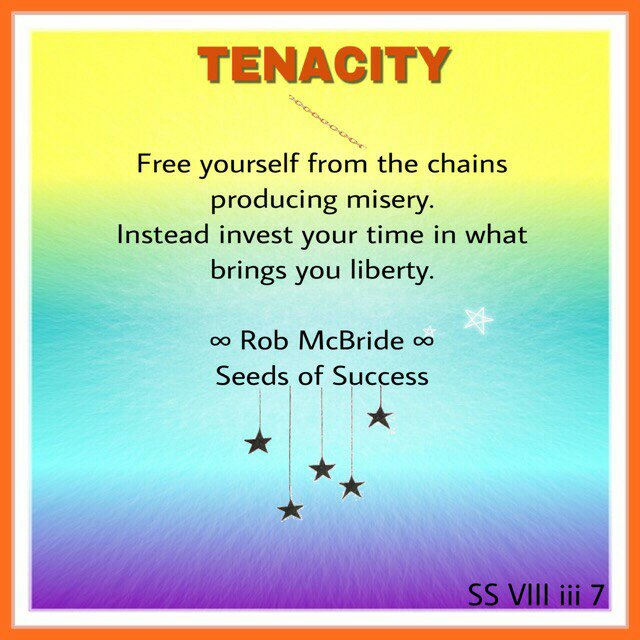
Go into the world convinced you are capable of handling any situation. Do what needs to be done to be where you want to be.
∞ Rob McBride ∞
SS VIII iii 6
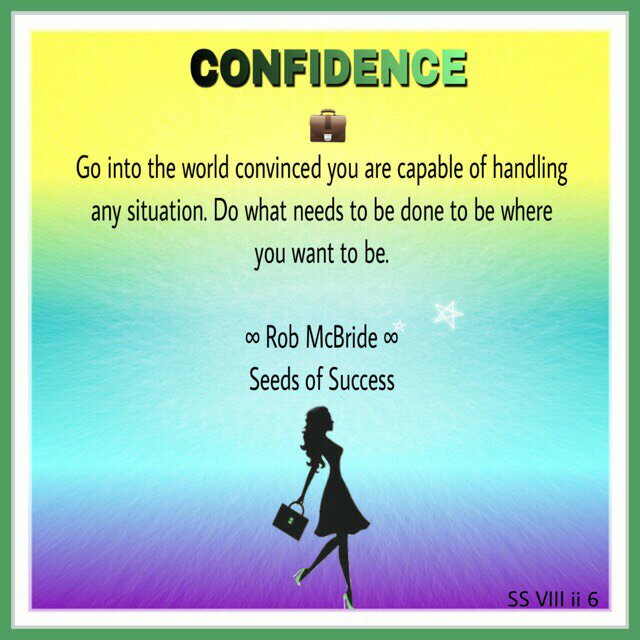
Life happens in the present, not in the future or the past. Do your best day by day, for as long as it lasts.∞ Rob McBride ∞SS VIII iii 5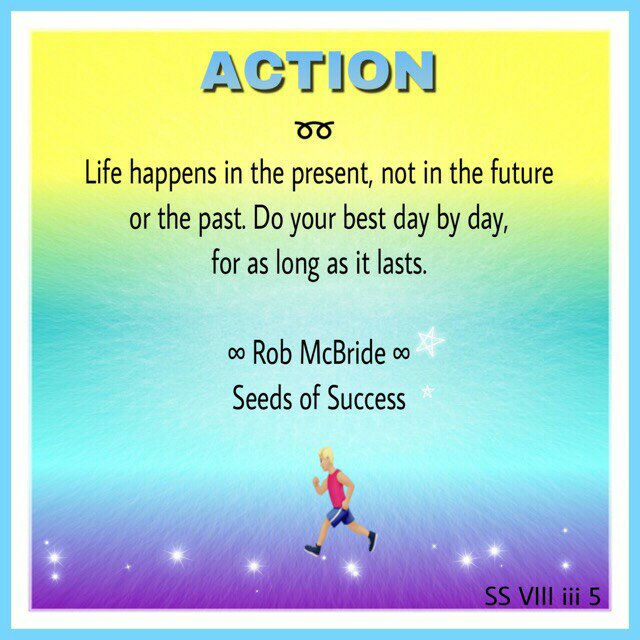
Life’s most valuable treasure is the present. Take advantage of this moment to say “I Love You” to your loved ones.
∞ Rob McBride ∞
SS VIII iii 4
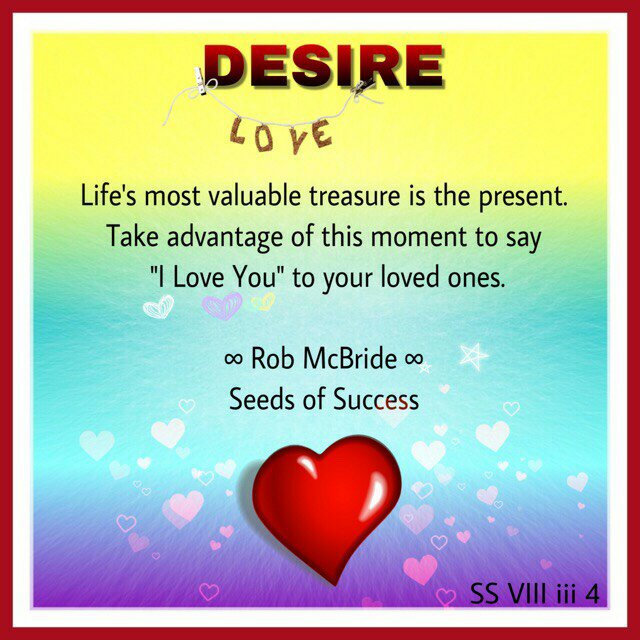
The future will arrive in good time. In the meantime, take the time to be useful in what you do.
∞ Rob McBride ∞
SS VIII iii 3
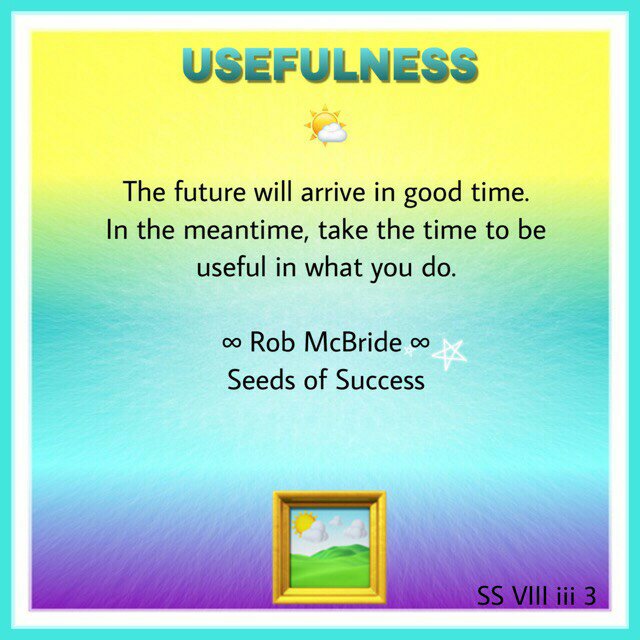
Yesterday is no more than a dream, don’t insist on going back to it. Take advantage of today and make it a magical moment.
∞ Rob McBride ∞
SS VIII iii 2
